#parisian high-society
Text
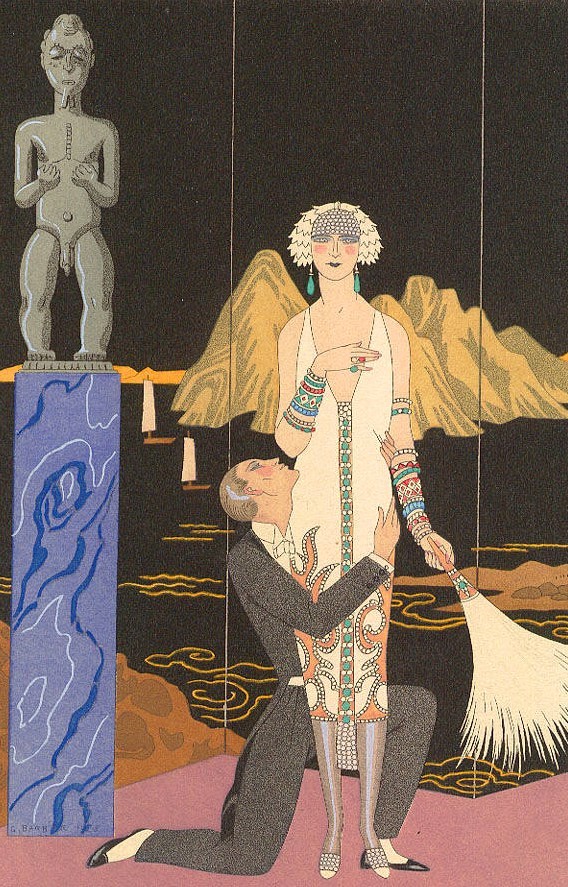
1924 George Barbier, Le Soir (Evening), Falbalas et fanfreluches: almanach des modes présentes, passées et futures.
"Art Deco Costumes By George Barbier" (Introduction by Madeleine Ginsburg, Curator, V&A Museum, London)
#1924#illustration#george barbier#barbier#art deco#african art deco#Falbalas & Fanfreluches#high-society paris#high-society life#high-society#parisian life#parisian fashion#parisian chic#art deco costumes#art deco illustration#parisian high-society#Falbalas et fanfreluches#Georges Augustin Barbier#flapper
43 notes
·
View notes
Text

John Singer Sargent (American, 1856–1925) • Mrs. Abbott Lawrence Rotch • 1903 • Private collection
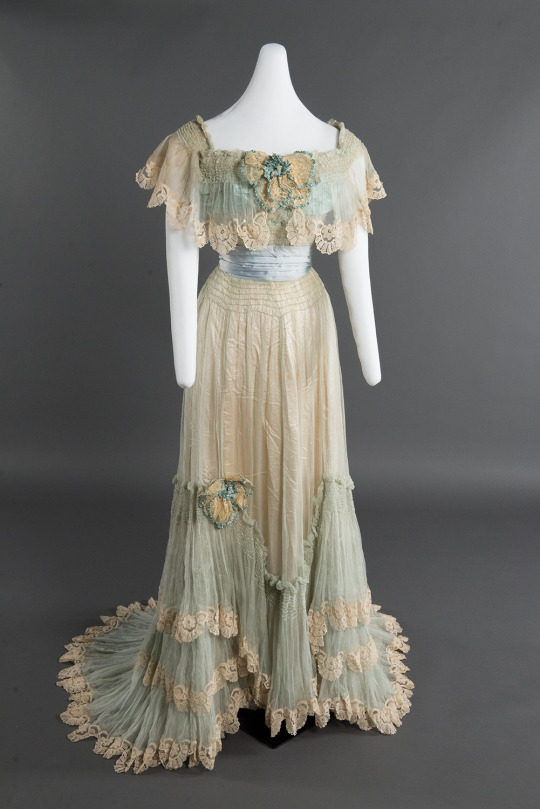

Dress Credit: Callot Soeurs (French, active 1895–1937), Evening dress, about 1900, silk, chiffon, and linen lace • Private collection
Viewing both the portrait and the photograph of the dress offers a distinct occasion to consider the artist, the subject, the dynamics of portraiture, and the culture of the time period during which both portrait and garment were produced. Now on view, the elegant blue and white evening dress designed by the Parisian couturier Callot Soeurs at the turn of the twentieth century and worn by Mrs. Abbott Lawrence Rotch for her portrait by John Singer Sargent. The premier international portraitist of the late nineteenth and early twentieth centuries, Sargent flourished as a painter to the English upper class.
#art#art history#portrait#painting#fine art#female portrait#british high society#society portrait#beautiful dresses in paintings#fashion history#callot soeurs#dress design & maker#john singer sargent#parisian couturier#early 20th century british art#american-british artist#the resplendent outfit blog#art & fashion blog
7 notes
·
View notes
Text

Tancrede Synave (1870-1936)
Au coin de café-le soir
signed 'tancréde Synave' (lower right)
oil on canvas
51¼ x 56 1/8 in. (130.2 x 142.6 cm.)
PROVENANCE:
Sotheby's, New York, 28 October 1986, lot 132.
Acquired at the above sale by the present owner.
EXHIBITED:
Paris, Salon des Artistes Français, 1929, no. 2170 (illustrated).
SALE ROOM NOTICE:
Please note the correct dates for the artist are 1870-1936, and the correct title for this lot is Au coin de café-le soir. The correct dimensions for this lot should read 51¼ x 56 1/8 in. (130.2 x 142.6 cm.).
Please note the additional exhibition information for this lot:
Paris, Salon des Artistes Français, 1929, no. 2170 (illustrated).
Price realised:
USD 40,000.
Estimate:
USD 15,000 – USD 20,000 and sold on 11 Feb 2009.
Closed:
11 Feb 2009.
#impressionist#modern art#french#oil on canvas#french artist#1930s#high society#parisian style#tancrede synave#christies auctions#was once a live auction titled live auction 2138
2 notes
·
View notes
Text

Places to be: Ralph Lauren Paris. #societythings
#darling#darling bonnie#darling society#darling bonnie land#high class hip hop#high street culture#art#culture#style#ralph lauren#ralph's#paris#france#ralph lauren paris#parisian chic#architecture#beauty#lifestyle#lifestyle blog#music#music blog#city guide#ralphs coffee#coffee#chic#glamour#societythings
3 notes
·
View notes
Photo


More info on my horror poto AU: Erik ‘renews’ his vessel around every month as it breaks down (thus the mask sometimes), but he would never take a body from high society. This is because he needs a face that won’t be recognised while he mingles with the Parisian elite, but also to make sure no one would care enough to investigate their disappearances.
Unlucky for him, the Comte de Chagny have a secret habit of playing cards in dingy bars with nameless miscreants and rogues.
#Phantom of the Opera#poto#erik poto#christine daae#raoul de chagny#horror poto au#alternate universe#horror#plainandgeneric draws#I have so much lore for this AU
567 notes
·
View notes
Text


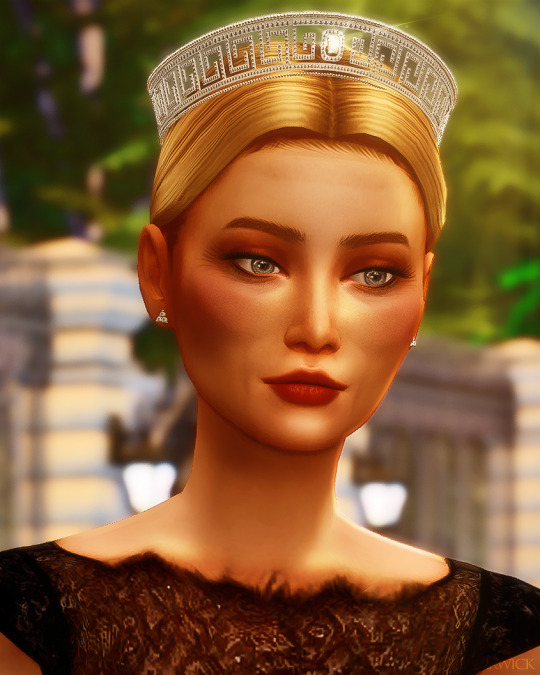

Sunderland's Royal Jewel Vault (18/∞) ♛
↬ Countess Wynn's Meander Tiara
The majority of the tiaras in the Sunderlandian collection were inherited through members of King Louis V's family, mainly previous queens Matilda Mary, Anne, and Katherine. This meander tiara however represents the current Wariwcks' French heritage, as it belonged to Queen Irene's mother, Marguerite Wynn.
Countess Wynn was born in 1914 as Marguerite Delphine Lucie Chevrier. She was the eldest of four children born to industrialist
Phillipe Édouard Chervrier (1880 - 1950) and his El Salvadoran wife, Consuelo Romana Gomez (1892 - 1979). Margurite's family claims ancestry from both French and Spanish nobility, although the bulk of their impressive fortune was derived from Phillipe's ceramics factory in the south of France. Much of Margurite's early life was disrupted by the First World War, during which the Chevriers settled in Mexico City with Consuelo's sister.
Following the war, Marguerite flourished in high Parisian society, becoming well-versed in the arts and fluent in several languages, including English and Spanish. Expected to marry into the French aristocracy, Marguerite made waves by instead marrying John Wynn (1911 - 1973), a career soldier from Sunderland whose great family had fallen on hard times following the deaths of John's three older brothers in the war. When the couple met in 1931, John was on a mindless trek across Europe, in search of a wealthy bride. Despite their differing backgrounds, Marguerite was smitten by John's optimism and good humour. The pair married a year later, with John even converting to Catholicism to appease Marguerite's parents.
Their wedding was held at the Chapel of the Palace of Versailles, one of the last grand society affairs of interwar Paris. The tiara, which featured a Greek key design punctuated by a central emerald-cut yellow diamond, was among Marguarite's wedding gifts. The jewel is ambiguous in origin but is agreed to be an early twentieth-century creation, likely from Cartier. It became a useful tool in Margurite's arsenal as she erupted in Sunderland as one of the country's wealthiest society ladies. Pearlie, as she became known, was noted to be arrogant, intelligent, and ravishing.
Pearlie is more "royal" than the rest of us combined. She drenches herself in jewels as if she were the ghost of the last Tsarina. — Queen Katherine, 1970
The Countess owned the tiara until 1968, when she gave it to her youngest daughter, Lady Irene, also as a wedding present. Irene's marriage to the future King Louis V was Pearlie's greatest life achievement and she became increasingly boastful. Maman Wynn, as she was called by the press and public, was known to meddle in royal affairs, especially the personal lives of her daughter and son-in-law. By the early 1980s, she was on bad terms with both.
Irene was never seen wearing her mother's tiara, but she kept it in her own personal possession for almost thirty years. In 1997, Irene continued the tradition by gifting the tiara to her only daughter, Princess Jacqueline, ahead of her wedding to Lawrence Belmont. The wedding was coincidently the last public appearance of the old Countess Wynn. She died peacefully at Chester Palace the same winter. Since then, Jacqueline has worn the tiara regularly at state functions and in official portraits. It's among the princess's most cherished pieces.
The Countess Wynn wears the tiara in a portrait, circa October 1943, eight years before the birth of her youngest daughter, Queen Irene
HRH Princess Jacqueline wears the tiara while attending a gala dinner & dance in July 2026
#warwick.jewels#✨#ch: irene#ch: jacqueline#ts4#ts4 story#ts4 royal#ts4 storytelling#ts4 edit#ts4 royal legacy#ts4 legacy#ts4 royalty#ts4 monarchy#ts4 screenshots
61 notes
·
View notes
Text
In 2021 the limited series on the career of designer Halston (Roy Halston Frowick, portrayed by Ewan McGregor) waltzed down Netflix's catwalk. Now we have at least three series chronicling the lives and careers of designers.
Currently on Disney+ in Europe is the exquisite CRISTÓBAL BALENCIAGA centering on, guess who? Spanish designer Cristobal Balenciaga, starring Alberto San Juan (Reyes De La Noche) as Balenciaga.

It's an interesting story about this enigmatic fashion genius that shows his steadfastness in his devotion to fashion to the sacrifice, some may say, of ethics due to the fact that while other fashion houses were shut down during Germany's occupation of some parts of France, he readily made clothes for the significant others of German soldiers.

The series also shines a light on Balenciaga's relationship with his creative partner and love-of-his-life Wladzio d'Attainville (played by Thomas Coumans).

Among the designers who appear or are name-checked in CRISTÓBAL BALENCIAGA is Christian Dior and Coco Chanel. These two fashion legends will appear in AppleTV+'s upcoming mini-series THE NEW LOOK with Ben Mendelsohn as Dior and Juliette Binoche as Coco Chanel and takes place during Germany's occupation of France.

youtube
THE NEW LOOK will feature covers of classics by Florence + and The Machine, Lana del Rey, The 1975, Perfume Genius and more.
Sometimes this year (at least I hope this year) will be KAISER KARL (apparently the title may be changed) starring Daniel Brühl as Kunty Karl Lagerfeld

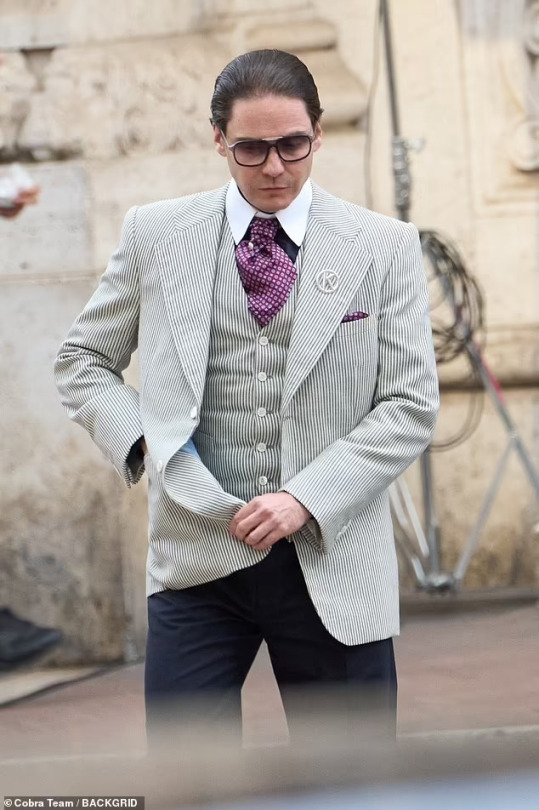
centering on him as a 38-year old trying to break into the Parisian world of high fashion where he finds himself in competition with he finds himself in competition with French fashion giants like Yves Saint Laurent.
The only Yves Saint Laurent depiction worth a damn. RIP beautiful Gaspard Ulliel
What is fashion if there's no one to wear it? For example, the high society ladies that will be depicted in the upcoming installment of FX's FEUD: CAPOTE VS. THE SWANS.
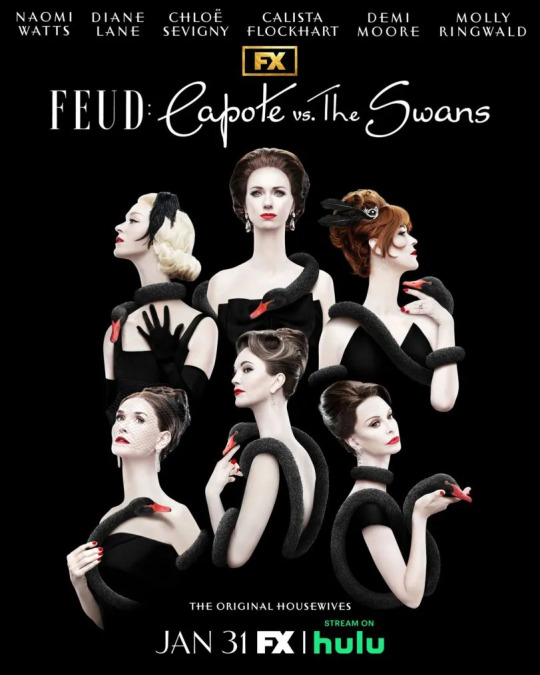
Hopefully this series will do justice to the mythos behind writer Truman Capote's nuclear fall out with the so-called Swans - a moniker Capote gave the socialites whose company he kept and whose secrets he didn't.
Playing Capote is Tom Hollander


Naomi Watts as Babe Paley, wife of CBS founder William S. Paley (which the annual PaleyFest is named after), Diane Lane as Slim Keith, ex-wife of famed director Howard Hawks, producer Leland Hayward amongst others; Calista Flockhart as Lee Radziwill, sister of Jacqueline Kennedy Onassis, Demi Moore Ann Woodward who got her place in society by being the wife of a banking heir,
Demi, that looks like a flamingo, not a swan.
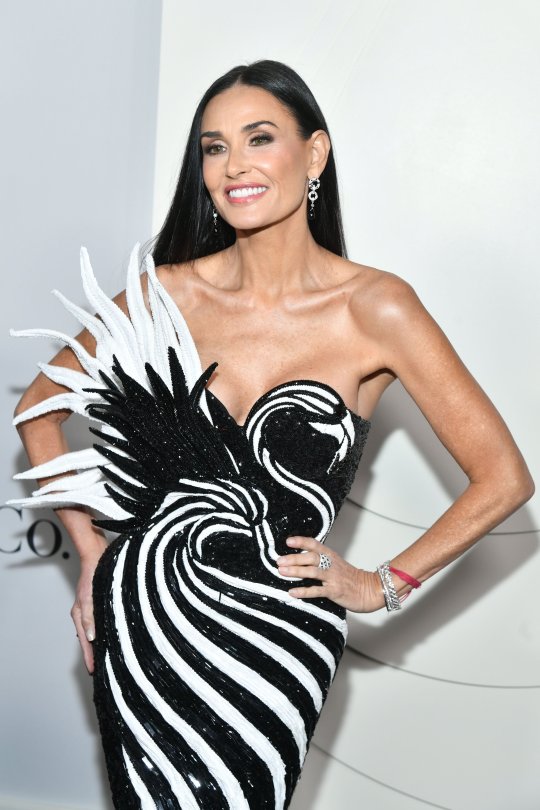
Chloe Sevigny as Andy Warhol and Salvador Dali muse C.Z. Guest, Molly Ringwald as JoAnne Carson, ex-wife of late-night talk show host Johnny Carson and the only Swan who remained friends with Capote after his ouster from their social circle.

TBT Elle magazine getting animated with fashion.
Goofy as Kunty Karl Lagerfeld.
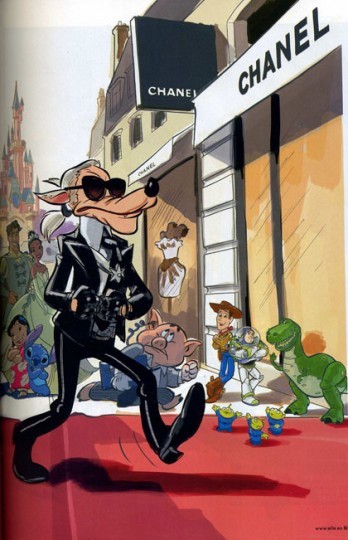


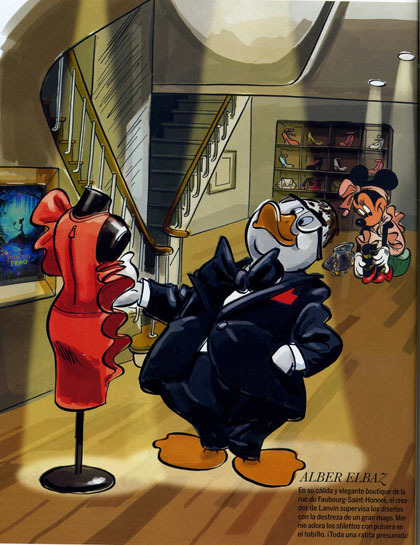
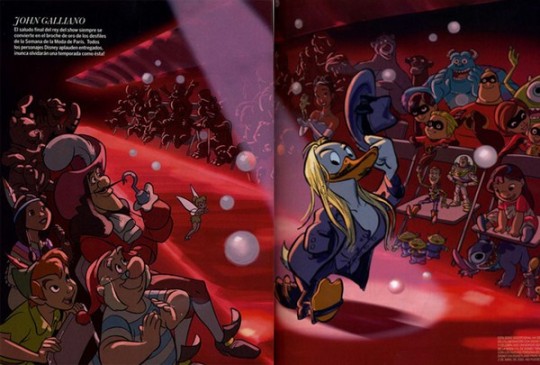

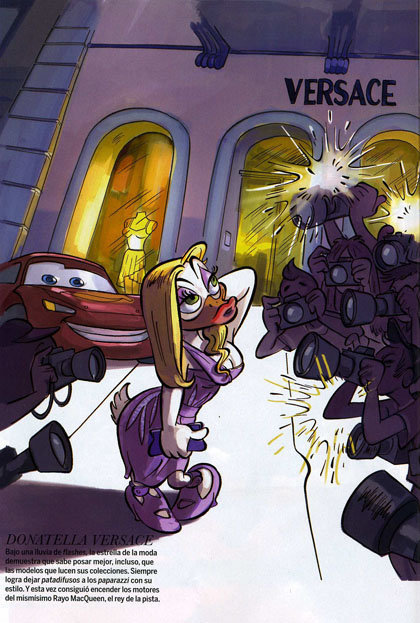

#cristobal balenciaga#the new look#tv talk#ben mendelsohn#alberto san juan#daniel brühl#feud: capote vs the swans#long post#kaiser karl#disney#designers#fashion#fashion designers#cartoon characters#christian dior#coco chanel#yves saint laurent#daniel bruhl#chloe sevigny#demi moore#donatella versace#marc jacobs#dolce & gabbana#juliette binoche#gaspard ulliel#truman capote#capote vs the swans#lana del rey#florence and the machine#john galliano
42 notes
·
View notes
Photo
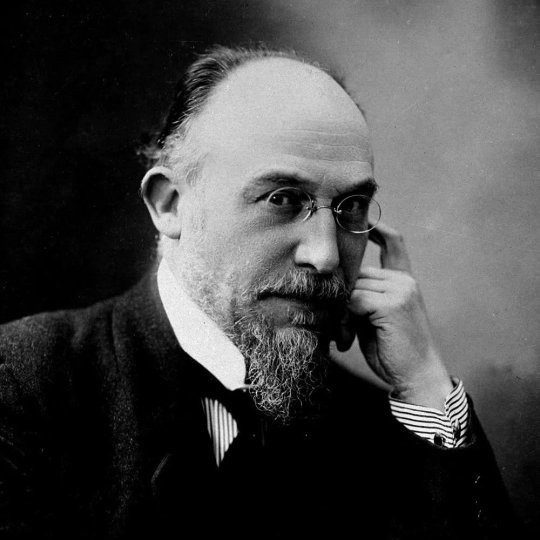
I am by far your superior, but my notorious modesty prevents me from saying so.
- Erik Satie
To his contemporaries and peers Erik Satie was something of an enigma. Just a few of his quirks included claiming he only ate white foods, carrying a hammer wherever he went, founding his own religion, eating 150 oysters in one sitting, and writing a piece with the instruction to repeat 840 times! As a composer, Satie paved the way for the avant-garde in music and became a very influential figure in the classical music of the 20th century whose works still sound fresh today.
Born into a poor and difficult childhood in the Normandy harbour town of Honfleur on 17 May 1866, Satie would always be an outsider. The Paris Conservatoire to which he was enrolled by his stepmother, herself a pianist, became for him “a sort of local penitentiary” during his teens; he left with no qualifications and a reputation for being lazy. He signed up for military service in 1886 and dropped out within the same year. Immersing himself in the bohemian life of Montmartre, he became linked with the popular music scene and eked out a living as an accompanist, playing at the Chat Noir cabaret. Always on the periphery, and forever out of money, he later downgraded from the cramped room in which he lived to the less fashionable Parisian suburb of Arcueil, where he holed up in isolation and squalor – no visitors set foot in the room during the near-30 years he lived there.
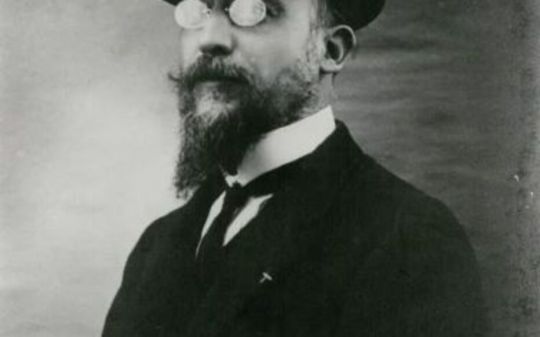
Much has been made of the eccentricities of this flâneur, who was always seen in a grey velvet suit, and yet underlying Satie’s music is his serious desire to create something new. You can hear it in his popular piano pieces: the haunting scales and rhythms of the Trois Gnossiennes written under the spell of Romanian folk music, and the meditative world of Gymnopédies, where, as in a cubist painting, motifs are “seen” from all sides. At a time when French composers were looking to escape the shadows of Wagner’s epic Romanticism, the French composer’s stripped-back mechanical sound, inspired by the humble barrel organ, offered a radically simple approach.
Satie preferred originality to the mundane. The composer of the famous Gymnopedies, could never be accused of having an uninteresting personality. For one, his outgoing fashion statements always caused a stir. During his Montmartre years, he had 12 identical velvet corduroy suits hanging in his wardrobe, which earned him the nickname ‘The Velvet Gentleman’, and in his socialist years, he donned a bowler hat and carried an umbrella.

Debussy helped to draw public attention to Satie, orchestrating two of his Gymnopédies, yet Satie had to wait until much later in life to attain celebrity status. While still earning a living writing salon dances and popular cabaret songs, and after suffering a creative crisis, he enrolled himself at the Schola Cantorum in Paris at the age of 39. Rather than finding him validation, his studies seem to have fuelled his hatred of convention - it’s with more than a hint of bitterness that he claims to put “everything I know about Boredom” into the Bach chorale of his masterful Sports et Divertissements piano pieces. But notoriety led to a succès de scandale and when it came it came with a bang in Parade, his surreal, one-act circus ballet for Diaghilev. Into the orchestral score, which featured jazz and cabaret tunes, were thrown typewriters, sirens and a pistol - just the kind of noises a wartime audience would normally pay not to hear. With its rigid cubist costumes by Picasso - which restricted Massine’s choreography - and a promotional push from Cocteau, it was provocative enough to secure Satie’s position at the vanguard of modernism.
Yet Satie was continually frustrated in his attempts to be accepted as an artist in high society France - his failure to establish himself at the prestigious Académie des Beaux-Arts, to which Debussy had won a scholarship, only compounded his resentment. Was this treatment by the cultural elite fair? Certainly his determination to antagonise his audience in his late ballets did little to endear him to the critics, but the fierce criticism he received in Paris was also a sign of things to come. Pierre Boulez would later poke fun at Satie’s lack of craft, while composer Jean Barraqué - another proponent of 12-tone music - would deride Satie as “an accomplished musical illiterate … who found that his friendship with Debussy was an unhoped-for opportunity to loiter in the corridors of history”.
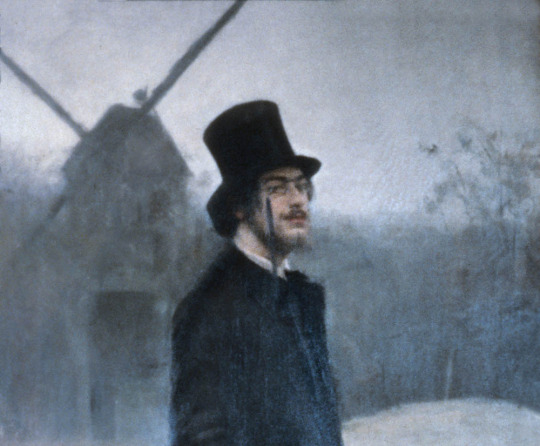
Satie is perhaps, to this day, the most audacious and original composer when it comes to naming his works e.g. Gnossiennes and Gymnopédies. With Satie you will not see symphonies, concertos or opus numbers. Satie possessed a wicked sense of humour and his mockery, both of himself and others, became an inspiration for many of his irony-tinged works. His Sonatine bureaucratique is a spoof of Muzio Clementi’s Sonatina Op. 36 and contained many witticisms in the score. For example, he writes Vivache (vache being French for cow) instead of the original Italian tempo marking Vivace.
Whether in the collage-like miniature piano parodies he wrote during the World War I, his creation of a theatre format that has endured over the years, or in his collaboration with Jean Cocteau, Pablo Picasso y Sergei Diaghilev, there is a liveliness of imagination and a hunger for innovation that made Erik Satie In the torch bearer of the vanguard in his work. Satie would influence so many so strongly that years later some of his closest friends became radical artists, for example. ManRay, the sculptor Constantin Brâncusi, and Marcel Duchamp, or a much younger group of Paris-based composers like Les Six.
Satie, a known drinker of absinthe, and apparently every other alcohol available, died of cirrhosis at the age of 59 in Arcueil, France in July 1925. But his compositions, especially those deceptively simple-sounding solo piano works, find life today through recitals, concerts, and great movie scores. Although he died in poverty with little success to his name, today Erik Satie is acknowledged as a founder of 20th-century modernism, who changed the face of music.
Personally I do find Satie's music enriching, But I also find that his calculated wackiness is culturally apt. Pieces like ‘3 Pieces in the Shape of a Pear’, ‘Flabby Preludes for a Dog’ and ‘Desiccated Embryos’ rewardingly deflate Wagnerism's excesses in a characteristically French way.
#satie#erik satie#quote#music#classical music#composer#pianist#debussy#modernism#paris#french#france#arts#culture#french culture#innovation#artist#life
162 notes
·
View notes
Text
JACOBIN FICTION CONVENTION MEETING 37: CHÉVALIER (2022)

1. The Introduction
Well, hello there, Citizens! I’m back and I hope you missed me! Sorry for the multiple delays and all, but luckily I’m back at it now!!!
Okay, so this movie has been on my radar ever since it got announced. A story featuring a real Black man who lived during Frev? Sign me up! This has excellent potential and also, to my knowledge, at least a partially Black crew so we get more representation of marginalized groups in crews and on the screen!
At least, those were my thoughts before I actually watched the movie, but we’ll get to whether it was a good media piece later.
I found the movie on Russian language streaming websites, but it’s available on Amazon Prime and Disney Plus for those who would like to watch the original English version.
This review is dedicated to @idieonthishill , @vivelareine (who has a review that unpacks the movie from a historical pov and is welcome to add to the review 😊), @theravenclawrevolutionary , @sansculottides , @citizentaleo , @saintjustitude , @avergehistoryenjoyer , @lanterne and @jenxiez .
Okay, let the Jacobin Fiction Convention reopen!
2. The Summary
The movie tells a story of a real man, Joseph Bologne aka Chévalier de Saint-Georges. Recognized son of a white French nobleman and an enslaved black woman, Bologne must navigate the cutthroat world of the Parisian high society, dealing with racism and trying to reconcile his “white” upbringing with his African roots.
Sounds interesting, but let’s see how the premise was handled.
3. The Story
The Introduction scene - a musical duel between Mozart and Bologne, was actually quite good in my opinion. So were the other beginning scenes of kid Bologne growing up in France as an aristocrat and being bullied by his white peers, plus his father telling him not to let society break him.
These scenes establish quite well that Bologne has to carve out a place for himself among French nobility and make a lot of effort to get even a hint of acceptance. Sounds like a nice setup, right? Well, unfortunately at times Bologne in the movie doesn’t seem to have much agency at all.
For example, his title is granted to him by Marie-Antoinette basically on a whim, handed to him on a silver platter because the queen was impressed by his fencing skills, which in my opinion isn’t enough to show a character who has to work hard to be accepted. I think it would’ve been better if Bologne had at least several impressive fencing performances to prove himself and show more of his skills.
On the flip side, there are characters who have a bit too much agency. For example, in the story it’s Marie Antoinette who is calling all the shots and giving all the orders in France, even though Louis is alive and well. It’s definitely jarring to see how people say “by the order of the queen” when the king should be the one mentioned instead.
I didn’t care much for the love triangle storyline, but it’s my own personal preference and also the fact that it, like many parts of the story, isn’t all that nuanced. So yeah, very bland and boring.
Yes, Citizens, unfortunately nuance has officially left the chat, especially when it comes to the main character. See, at first Bologne doesn’t give a shit about poverty and famine plaguing France. He is enjoying his cushy life and his friendship with the queen of France instead. However, you know what makes him join the Jacobins? A fucking PERSONAL FALLING OUT WITH THE QUEEN. Not promises of abolishing slavery or granting rights to black people, not his own ideals… Just fucking pettiness!
It would have been much better if he didn’t have a falling out with Marie Antoinette and signed up for fighting with the Republicans because he genuinely wanted to do what was right, not due to personal beef. Especially since that was why he joined Frev in reality – the real Bologne made a choice to do the right thing simply because it seemed to be the right thing to him. Not out of petty desire to get back at the queen.
Also, the conflict between Bologne and his mother about how he is acting “too white”… eeeehh. To me it felt very anachronistic but maybe I’m wrong and there is more nuance missing because EVERYONE at court had to carry themselves in a certain way to make it. If you couldn’t do it, you were socially FUCKED. Besides, Nanon (the mother) and her friends crack really mean jokes about Bologne being “too white”, which is… well, an INTERESTING way to endear him to his mother’s culture…
The movie is juggling admittedly anachronistic theme about black culture, anti-slavery message, court drama and love triangles… and the juggling is done quite sloppily too, I’m afraid.
Also, just to illustrate how inaccurate this movie is, the events of 1789 are shown happening in 1776 for some reason, which shows just how much the creators didn’t give a shit about research.
Moving on.
4. The Characters
I really didn’t care for Bologne to be honest. He shows selfishness and pettiness, doesn’t have enough agency in the story and is also very inconsistent. After falling out with Marie Antoinette, he claims he defended her, which… he didn’t! At least it’s not shown in the movie! What the fuck happened to “show, don’t tell”?! Also, his incredible talents aren’t really shown in the way they could’ve been, more on that in the soundtrack section. A missed opportunity, really.
Nanon, Bologne’s mother, is a real embodiment of the themes of slavery and trauma present in the the movie. She merely exists to push him to embrace his African heritage and to remind him that he will never be truly accepted by other nobles. I honestly wish there was more to her character, because she ends up being little more than a walking theme embodiment.
Marie Antoinette here is a capricious, fair weather friend. She CLAIMS to support Bologne, but does it in indirect ways out of fear that nobles wouldn’t appreciate her openly backing a black man. Even though she is an absolute monarch so she can afford to show her support more openly. Actions speak louder than words, and she is clearly not a true ally of Bologne.
Marie Joséphe, Bologne’s love interest, is a woman trapped in a miserable marriage and yearning to act in Bologne’s operas. While I do sympathize with her, I believe that there really isn’t much depth to her either. We just don’t learn much about her. This is becoming a common theme…
Also, just as a side note while we’re talking about characters, many white characters in the movie are shown as mere flat caricatures. I can understand why, but, again, this doesn’t show nuance as in reality, while Bologne definitely had to deal with racism, he was not only accepted, but adored as a celebrity, but we don’t see that reflected in the attitudes of other people towards him. Because apparently the brains of the spectators will implode when they see nuance in a modern movie, it seems.
5. The Setting
Personally I wasn’t that impressed by the costumes or the settings. I’ve seen much better ones. Nothing bad, but nothing outstanding either.
6. The Soundtrack
Where the fuck is actual music from that time period?! Where is music by Bologne himself?! It’s a fucking missed opportunity and I don’t know what prevented the creators from including the music written by the MAIN DAMN CHARACTER into a biopic about him. A shame that they missed yet another opportunity.
7. The Conclusion
Honestly… I can’t say much when it comes to what this movie is fucking about. The story is bland, lacks nuance, doesn’t follow basic historical facts and is pulled in a million directions.
For a movie about an obscure figure, it doesn’t show much of the things Bologne was known for and at times even strips him of agency. We need to have better POC representation, because this is just not it.
The movie is mediocre, bland and forgettable. Don’t waste your time on it.
With that, I declare today’s meeting of the Jacobin Fiction Convention to be over. Thank you for your patience and support during this hiatus of mine.
Stay tuned and stay safe!
Love,
Citizen Green Pixel
#chevalier 2022#joseph bologne#jacobin fiction convention#french history#black history#french revolution#marie antoinette
30 notes
·
View notes
Text
THIS DAY IN GAY HISTORY
based on: The White Crane Institute's 'Gay Wisdom', Gay Birthdays, Gay For Today, Famous GLBT, glbt-Gay Encylopedia, Today in Gay History, Wikipedia, and more … March 7



U.S. Marine Drummer 1811
1811 – Ensign John Hepburn and drummer Thomas White are hanged for consensual sodomy by the English Navy before "a vast concourse of spectators" including nobles.


1855 – Count Robert de Montesquiou-Fezensac was a writer during France's Belle Epoque, but he is best remembered as a dandy and an aesthete, who inspired the literary creations of others.(d.1921) Born in Paris into a family that traced its nobility back to the early middle ages, Montesquiou boasted (quite truthfully) that he was "allied to the greater part of the European aristocracy."
Montesquiou was equally proud of his intellectual and literary achievements, which, at least in his own eyes, were considerable. He published eleven volumes of symbolist poetry, but contemporary critics found his verses overly "precious" and posterity has been no kinder. Montesquiou also wrote two novels, three volumes of memoirs, and a great deal of literary criticism.
He befriended, encouraged, and supported numerous artists: painters such as Gustave Moreau, Edgar Degas, and James McNeill Whistler; poets such as Paul Verlaine, Stéphane Mallarmé, and François Coppée; and prose writers such as Adam Villiers de l'Isle-Adam and Marcel Proust.
He crammed his home with so much artistic bric-à-brac that fellow aristocrat Boni de Castellane remarked that he showed "less taste than imagination." as an interior decorator.
Montesquiou was a well-known figure in Parisian high society. He entertained lavishly, although, as he confessed, "I preferred my receptions to my guests, who may have noticed. . . . I gave parties for selfish reasons, less to satisfy my guests than to please myself."
In sum, Montesquiou's contemporaries generally considered him a dandy, an aesthete, and a snob. They admired his stylishness, but found him pompous and even ridiculous; they flattered his ego because they feared his savage wit, but they mocked him behind his back.
Montesquiou's homosexual tendencies were patently obvious, but he may in fact have lived a chaste life. He had no affairs with women, although in 1876 he reportedly once slept with the great actress Sarah Bernhardt, after which he vomited for twenty-four hours. (She remained a great friend.)
He had aristocratic women friends, but much preferred the company of bright and attractive young men. In 1885, he began a close long-term relationship with Gabriel Yturri (1868-1905), a handsome South American immigrant who became his secretary, companion, and possibly lover. After Yturri died of diabetes, Henri Pinard replaced him as secretary in 1908 and eventually inherited Montesquiou's much reduced fortune.
Montesquiou inspired the peacock in Edmond Rostand's play Chantecler (1910), who pompously announces to the other barnyard animals: "I am pleased to represent that Good Taste of which I am . . . the guardian."
However, Montesquiou is most remembered as the principal model for Baron Palamède de Charlus in Marcel Proust's great novel, Remembrance of Things Past (1913-27, recently translated as In Search of Lost Time). All Paris recognized Montesquiou in Charlus's arrogance and insolence, mannerisms, and voice inflections.
Montesquiou pretended not to notice and even praised Proust's work for its realistic treatment of homosexuality, but he was in fact mortified, writing to a friend: "I have taken to bed, sick from the publication of three volumes that have distressed me."
Montesquiou died in Menton on the French Riviera on December 11, 1921. He was buried in Versailles next to the faithful Yturri.


1875 – One of France's most distinguished composers, Maurice Ravel (d.1937) was a prolific and versatile artist who worked in several musical genres, creating stage music (two operas and several ballets), orchestral music, vocal music, chamber music, and piano music. His unique musical language, employing harmonies that are at once ravishing and subtle, made him one of the most influential composers of the twentieth century.
Ravel's sexuality has been the subject of intense speculation. Although it is not certain that he was gay, he was rumored to be so. Fiercely protective of his privacy, his most significant emotional relationship seems to have been with his mother. At the same time, however, he embraced a public identity as a cultured dandy, a dapper man-about-town of refined taste and sensibility.
A life-long bachelor, Ravel had several significant relationships with men, including one with pianist Ricardo Viñes, a fellow dandy and bachelor, but it is not certain whether these friendships were sexual.
As a young man, Ravel joined a circle of avant-garde writers and composers called Les Apaches. This group included Viñes and the composers Manuel de Falla, Florent Schmitt, and Stravinsky. Several members of the circle, including Ravel, developed an interest in the new American form of music, jazz. Not surprisingly, jazz rhythms entered some of Ravel's compositions, such as his late Sonata for Violin and Piano, which includes a jazzy movement called "The Blues."
Ravel's most familiar work to contemporary audiences is the Boléro of 1928, which he considered something of a well-orchestrated joke because of its constant repetitions of the same melody. Commissioned by the dancer Ida Rubinstein for a ballet choreographed by Nijinsky, the Boléro is a bravura work built on a relentless rhythm that culminates in the wild abandon of Dionysian revels. It is certainly one of the most widely performed and recognized pieces of classical music.
Ravel's career and life can be divided into two parts, separated by World War I, which had a traumatic effect on him. Before the war, he was an important presence in French musical circles, often conducting his own works, giving piano concerts, and collaborating with Sergei Diaghilev on commissions for the Ballets Russes. After the war, however, the composer's physical and emotional health deteriorated. He retreated from Paris and spent the last decade of his life in semi-retirement.
In 1928, Ravel made a triumphant four-month tour of the United States, where he met many musical notables, including George Gershwin, whom he admired greatly.
In his final years, Ravel suffered a series of health problems and gradually lost the ability to communicate with others. He died in Paris on December 28, 1937 after a series of strokes and an unsuccessful brain operation.

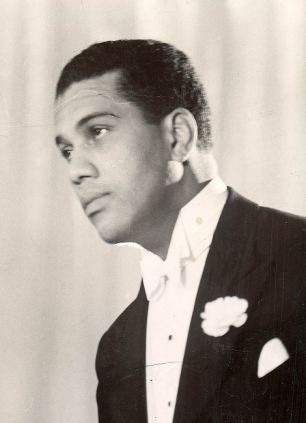
1900 – The British/Grenadian jazz musician Leslie Hutchinson was born on this date (d. 1969). Known as "Hutch", he was one of the biggest cabaret stars in the world during the 1920s and 1930s. He was born on the Island of Grenada as Leslie Arthur Hutchinson, he took piano lessons as a child. He moved to New York City in his teens, originally to take a degree in medicine as he won a place due to his high aptitude, and began playing the piano and singing in bars. He then joined a black band led by Henry "Broadway" Jones, who often played for white millionaires such as the Vanderbilts, attracting the wrath of the Ku Klux Klan.
In 1924 he left America for Paris, where he had a residency in Joe Zelli's club and became a friend and lover of Cole Porter. He was for some time the highest paid star in Britain and was one of the biggest stars during the twenties and thirties in the UK.
"Hutch" was believed to have had relationships with Ivor Novello, Merle Oberon, and actress Tallulah Bankhead. The rumors include affairs with Edwina Mountbatten and members of the British Royal Family which supposedly led to his social ostracism and the destruction of his professional career.
Encouraged by his lover Edwina Mountbatten, he came to England in 1927 to perform in a Rodgers and Hart musical, and soon became the darling of society and the population in general. "Hutch" was a favorite singer of the then Prince of Wales (later King Edward VIII). He was regularly heard on air with the BBC. One of his greatest hits was "These Foolish Things". He was a much-loved wartime entertainer. As well as being a friend and lover of Cole Porter, he recorded several of his songs, including "Begin the Beguine" and Porter's list song "Let's Do It (Let's Fall in Love)", to which he supposedly made up some 70 new verses. He later married and had a daughter. He would go on to sire six further children to five different mothers.
Hutchinson died from pneumonia in 1969. Only 42 people attended his funeral.


1934 – The Soviet Union reinstates consensual sodomy as a crime, with a penalty of up to five years in prison, if with consent, and eight years at hard labor, if without


1964 – Today's also the birthday of American writer Bret Easton Ellis. His books include: Less than Zero (1985), The Rules of Attraction (1987), American Psycho (1991), The Informers (1994), Glamorama (1999), and Lunar Park (2005) When asked an interview in 2002 whether or not he was gay, Ellis explained that he does not identify himself as gay or straight. He explained that he is comfortable to be thought of as gay, bisexual or heterosexual and that he enjoys playing with his persona, identifying variously as gay, straight and bi to different people over the years.
In a 1999 interview, the author puts forward that his reticence to definitively label his sexuality (in his own words, he is "very coy and weird about it") is for "artistic reasons", because "if people knew that I was straight, they'd read [my books] in a different way. If they knew I was gay, 'Psycho' would be read as a different book."
In an interview with Robert F. Coleman, Bret refers to his as an "indeterminate sexuality", and said "any other interviewer out there will get a different answer and it just depends on the mood I am in".
Ellis has long acknowledged having had gay sex, but for most of his career he unequivocally claimed he was not gay. Then, in 2005, he began to discuss having had a six-year relationship with a man ten years his junior who died tragically young.
Ellis's fiction roughly mirrors his biography. His first four novels and one book of short stories are filled with sexually ambiguous characters. Then, in Lunar Park (2005), Ellis himself appears as a character, a middle-aged writer, who, just before the novel ends, begins a relationship with a younger man.
In a 2011 interview Ellis again states that his answers to questions about his sexuality have varied from interviewer to interviewer, citing an example where his reticence to refuse the label "bi" had him stuck with it and it was published that way. "I think the last time I slept with a woman was five or six years ago, so the bi thing can only be played out so long," he clarifies. "But I still use it, I still say it." In responding to Dan Savage's It Gets Better campaign, aimed at preventing suicide among LGBT youth, Ellis tweeted "Not to bum everyone out, but can we get a reality check here? It gets worse."


1974 – Darryl Stephens is an American actor. He is best known for playing Noah Nicholson on the television dramedy Noah's Arc.
Stephens was born in Pasadena, California. He grew up in the Altadena and Pasadena areas of Los Angeles, California. He attended the University of California, Berkeley where he studied sociology and ethnic studies along with drama and dance before earning a Bachelor's Degree in American Culture Studies. He performed for four years in San Francisco with the cult theater troupe Sassymouth before returning to Los Angeles to pursue a film and television career. He also worked with the Berkeley Black Theater Workshop.
Back in L.A., Stephens appeared on the sexy late-night serial MTV's Undressed, the short-lived series That's Life, and VH1's Red Eye. During the same period, he was also appearing in various commercials for products such as Dockers and performing in small theater venues and scene study classes. He also played in a Hollywood revival of the well-known play Bent.
Stephens had supporting roles in the films Seamless, Not Quite Right, and Circuit. However, his breakout role came in 2004, when independent filmmaker Patrik-Ian Polk cast him as the lead character for the new series Noah's Arc. The original intention was for the show to be released direct-to-DVD after it had received rave reviews at various film festivals. However, in the fall of 2005, LOGO picked up Noah's Arc, which debuted on October 19.
In August 2006 the second season of Noah's Arc was televised. By the end of 2006, Stephens had completed roles in the comedy Another Gay Movie and the drama Boy Culture, the latter alongside newcomer Derek Magyar.
In October 2008, a feature film version was released. Noah's Arc: Jumping the Broom picks up where the show's second season left off and tells the story of the marriage between Stephens' character and Jensen Atwood's.
In 2010, he guest starred in an episode of Private Practice, playing a pre-op transgendered character. His next film, scheduled for release in 2011, is Bolden!, a bio film about jazz great Buddy Bolden starring Anthony Mackie as Bolden. Stephen's role is of cornet player Frank Lewis.
Stephens released a self-published novel in 2011, entitled Shortcomings, which weaves together short stories he had written previously. He is also a singer songwriter.
Although Stephens is reluctant to discuss his personal life, he is openly gay and his roles address issues of classism and sexuality.


1985 – Guy Benson is a columnist, commentator, and political pundit. He is a contributor to Fox News, political editor of Townhall.com, and a conservative talk radio host.
Benson lived much of his early life overseas, then grew up in Ridgewood, New Jersey, where he attended middle school and Ridgewood High School. During high school, he was known for broadcasting sports on local television. While working toward his bachelor's degree at Northwestern University, Benson worked for the campus radio station, WNUR, broadcasting sporting events and hosting a political talk show. He also interned for two summers at Fox News, working primarily with Hannity & Colmes, before assisting the channel with its coverage of the 2004 Republican National Convention. Benson also reported for an NPR station in South Florida, broadcast summer baseball games in the Cape Cod Baseball League, and interned at the White House.
After graduating with honors from the Medill School of Journalism at Northwestern University in 2007, Benson served as the producer of The Sandy Rios Show, then a local afternoon radio show with Christian Right commentator Sandy Rios on WYLL-AM in Chicago, before Rios moved to Washington D.C. in July 2010 to host Sandy Rios in the Morning on AFR TALK on American Family Radio. From to 2008 to 2015, Benson also hosted his own Sunday night radio program, The Guy Benson Show, on AM 560 WIND in Chicago and AM 1260 WWRC in Washington, D.C.
In 2010, Benson became political editor at Townhall.com, where his columns had been published since February 2008. Benson also contributes to Townhall's sister site, Hot Air. He previously wrote at Andrew Breitbart's "Big" sites and National Review Online's Media Blog. In addition to serving as a regular guest and substitute host on The Hugh Hewitt Show, Benson is a frequent guest on cable news networks, including Fox News and CNBC. In May 2015, together with coauthor Mary Katharine Ham, Benson published his first non-fiction book End of Discussion: How the Left's Outrage Industry Shuts Down Debate, Manipulates Voters, and Makes America Less Free (and Fun), a critique of political correctness in politics, media and culture from the point of view of two Millennial conservatives.
In April 2008 Benson discovered video from a 2007 reunion of the Weathermen, a radical left-wing group from the 1960s and 70s. The footage included quotes from two members, Bill Ayers and Bernardine Dohrn, defending their actions. Since Barack Obama was criticized during the 2008 presidential campaign for associating with Ayers and Dohrn, the clips made national news. Benson garnered national attention during the 2008 presidential race on two other occasions. In August, after the Obama campaign attacked WGN radio in Chicago for allowing Stanley Kurtz to appear on their station, Benson—who was in studio during the interview—detailed his experience. Then, two weeks before Election Day, Benson joined with Mary Katharine Ham and Ed Morrissey to pen "The Comprehensive Argument Against Barack Obama," released on Hot Air.
Benson's brother is actor, writer, and director James Benson. Guy Benson came out as gay in May 2015 by announcing in advance of publication that his new book, End of Discussion, would include a footnote: "Guy here. So, I'm gay." Benson told an interviewer that "gay rights is not something that dominates my attentions — or my passions." In September 2019, Benson married Adam Wise.


2014 – Jamaica: Police attempted to evict homeless LGBT youth from the sewers of New Kingston. A judge ruled that since sewers were a pubic place, and the youth had nowhere else to go, they could stay there. Youth who were arrested were charged with swearing and had to pay a fine.



13 notes
·
View notes
Text

George Barbier, L'Eau (Water) for Falbalas & Fanfreluches Almanach des Modes Prsentes Passes et Futures. 1924.
Hand-coloured, plate-signed pochoir from Falbalas & Fanfreluches: "Water", part of the "Four Elements" quatrain from Barbier's 1924 Almanac. "How far we have come" could be an apt subtitle with the revealing new bathing suits (or lack thereof), not to mention the streamlined turban, shown here midway in its evolution from Poiret's elaborate 1910-12 confection to the iconic flapper headband. The background reflection, so very stylized Art Nouveau in line, is a subtle reminder of the vast societal changes which transformed into the new permissive era over the span of a mere 20 years or so (reaching back to when the turn-of-the-century bathing costume was of serviceable and stout wool jersey, right down to the full-stockinged knees). This famous illustrated almanac series was produced from 1922 to 1926 only and depicted high-society life in Paris - the fashion, social and artistic capital of the early inter-war years. Each issue contained a small diary and notation section, an introduction by one of the leading social/cultural doyens of the day, a decorative cover and twelve fashion plates (one for each month of the year). (x)
#1924#illustration#water#george barbier#barbier#art deco#jazz age#20s paris#paris#paris fashion#l'eau#four elements#elements#high-society#high-society life#high-society life in paris#20s lifestyle#20s parisians#my edits#art#1924 illustrations
42 notes
·
View notes
Text
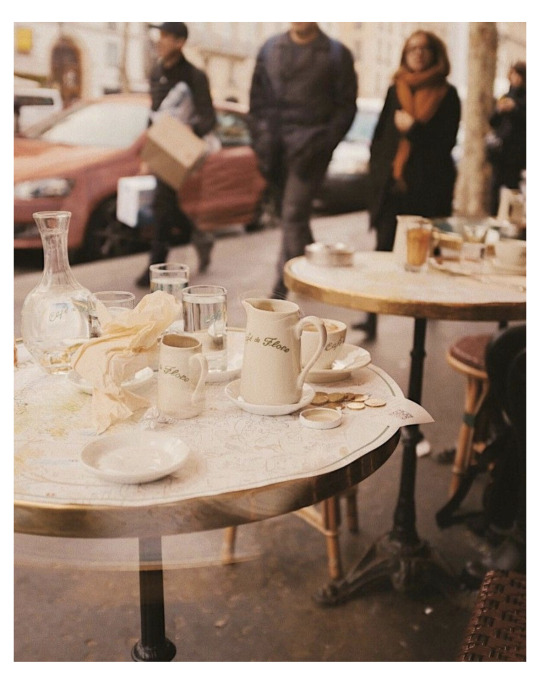
Places to be: Cafe de Flore. #societythings
#darling#darling bonnie#darling society#darling bonnie land#high class hip hop#high street culture#art#culture#style#lifestyle#lifestyle blog#music#music blog#paris#parisian#cafe de flore#food and beverage#france#chic#glamour#societythings
1 note
·
View note
Text

Not Another Cinderella Story — A WIP Masterlist by mxxnlingwriting
— Logline —
When the King gives the Crown Prince an ultimatum to find a wife before he abdicates the throne, he has no choice but to throw a ball in the hopes of finding his future wife. In the hours of the event, he strikes up a conversation with a mysterious woman. Finding her after the ball is only half of the battle as convincing her to change her ways to suit the royal life proves to be a much harder task than he initially anticipated.
— Details —
age group/genre: new adult contemporary romance
type: novel
pov: dual, third person, past tense
status: brainstorming | outlining | drafting | editing | proofreading
started: october 2023 | finished: — | released/published: —
— Features —
small fictional european country (think parisian architecture with monaco geography/lifestyle), modern-day royalty, socialities, high society, bakeries and lots of baked goods, strangers (to friends) to lovers, family dynamics, the power of friendship, lots of parallels to cinderella (hence the name of this WIP) and more!
— Index —
All Posts
About
Character Profiles
Inspiration
Excerpts
Moodboards
Playlist
© mxxnlightwriting 2023 All rights reserved. Copying, reposting, translating and/or modifications of my work are strictly prohibited.
Tari's Note: This is going to be my NaNoWriMo 2023 Project! It came to me while I was trying to come up with some sort of story to help me fall asleep, and I ended up mentally plotting this entire thing in my head in the hours it took me to fall asleep. Now, it's almost time to write it down, and I couldn't be more excited!
#wtwcommunity#wip intro#wip introduction#nanowrimo 2023#nanowrimo#writeblr community#writeblr#writers on tumblr#am writing#creative writing#writers community#writers of tumblr#romance wip#romance writing#new adult romance#romance author#writing community#writing wip#wip: not another cinderella story
17 notes
·
View notes
Note
Hello! Maybe this is a hard ask to answer, but could you guys rec dramione fics with the best villains/antagonists in your opinion.
These are fics that I found had unique mysteries and were very AU (in a good way):
Femme Fatale By: cleotheo - M, 26 chapters - Draco Malfoy’s new position as an Auror for the British Ministry throws him head first into a hunt for a serial killer. Working with Harry Potter and Ron Weasley, he sets out to catch the killer as well as entering into a romantic relationship with their other colleague, Hermione Granger. Murder mystery with a side helping of Dramione romance.
The Assignment - Nightbloom7 - E, 17 chapters - Cursed objects are causing death and destruction. When the objects themselves are found to hold no trace of Dark Magic, the Department of Magical Artefacts is stumped. Draco Malfoy leant back in his chair and crossed his arms in bafflement. “And your professional assessment is that the best way of gathering evidence is sending Granger and I together to a sex club?” “Worried about your reputation, Malfoy?” Hermione asked flatly. He scoffed. “Hardly. If I were outed for going to an expensive parisian sex den it would be considered very much on brand.” "That’s why it’s so important we’re believable as a couple. We should talk about touching,” Hermione insisted. "Touching,” Draco repeated, alarm bells going off in his mind. "As in how much of it you’re okay with, where…" "Casual touching,“ he nodded. "But also, passionate touching,” Granger pressed. Merlin’s beard. Draco was quickly coming to the realisation that he was likely to regret this.
The Order of Serpents by bl_crtz - E, 43 chapters, Words: 190,103 - During the Battle of Hogwarts, Harry Potter walked into the forbidden forest, died, and walked out with crimson eyes as the new vessel of the Dark Lord. Since then, Hermione Granger served as an elite member of the True Order, isolating herself from other Order members and going on missions alone, not only haunted by the loss of her best friend, Harry, but Ron who had run away after the battle. Three and a half years later, Draco Malfoy shows up with his two year old son on the Order’s doorstep seeking to switch sides. Together, Draco and Hermione are forced to deal with not only each other, but their own past and confront who they’ve become because of the war.
Tremble & Depart - DarkoftheMoon - E, 30 chapters, Words: 139,609 - Draco Lucius Malfoy. Death Eater. Disposable. Life on probation at the Ministry meant keeping his head down and his mouth shut. On his first field assignment he’s tasked with investigating an abandoned Death Eater manor hiding more than a few secrets in its walls. Stuck with the only witch who agreed to work with him.
The Best of Me - MrsRen - M, 21 chapters - Officially, Hermione Granger was killed in action during the Battle of Hogwarts. Unofficially, Draco Malfoy has never stopped searching for her. Years after the war during a mission in France, his salvation comes in the form of a little blond boy and a familiar half-Kneazle.
High on Magic - LightofEvolution - M, 18 chapters - After years of living a life as a successful doctor, Hermione is needed in the world of magic again. A dangerous drug causes dramatic problems for the magical society, and it’s up to Hermione to solve them. And then there’s this certain blond Auror she can’t get out of her head… AU, EWE
The Fool, the Emperor, and the Hanged Man by ianthewaiting - M, 28 Chapters - Ten years after the fall of the Dark Lord, Hermione Granger leads of life of self-imposed obscurity, that is, until the day Headmistress Minerva McGonagall is murdered and a certain ‘hero’ is responsible. DM/HG, written originally in 2007-2008, and finally making its debut here! AU, DH-EWE, non-canon elements, time travel, character death, etc.
Hunted - bex-chan - M, 36 chapters - Forced to work together when their old schoolmates start dying, Hermione & Draco must overcome their differences to solve the mysterious deaths. The tension in the office is getting rather…heated. Mature themes. 4years PostHogwarts/War. EWE.
Inheritance By: bifmonzo - M, 31 chapters, Words: 190,240 - Draco is an Auror. Hermione is just trying to do her job. Neither of them are prepared for what happens after she wakes up hungover in his bed. And someone, but there’s really no telling who, has a secret that threatens the reality upon which their entire world is built. Dramione, nine years post-war.
WANDS OUT! - persephone_stone - M, 10 chapters - Albus Dumbledore appeared to have the perfect life: a successful career as a novelist, a loving family, and a dedicated staff. But when he is found dead of an apparent suicide on the morning of his 90th birthday, the life that seemed so perfect from the outside begins to unravel at the seams. With a team of investigators on the case, a greater mystery than any Albus could have written begins to unfold, full of lies, secrets, and murder. There’s only one thing to be sure of: everyone is a suspect. Join your favorite HP characters on a manic murder mystery romp, adapted from the Rian Johnson movie Knives Out! Note: Reading this will not spoil the movie, and having seen the movie will not spoil the story. I invite you to enjoy both!
Sins of the Past By: cleotheo - M, 36 chapters, Words: 100,880 - When Scorpius Malfoy and his best friend, Alex Zabini, go travelling the last thing anyone expects is for the two boys to run into trouble in Wizarding Britain. But when Alex is found unconscious outside of a nightclub and Scorpius is on the missing list, the Malfoys past comes back to haunt them as it becomes clear that someone is after revenge.
-Lisa
58 notes
·
View notes
Text
The Secret Life of Hidden Places - US

Delve into both the secretive places themselves and the eccentric and obsessive minds that created them. Visit a chamber of skulls high in the Swiss Alps, a Japanese temple full of traps, a Parisian apartment locked and untouched since World War II, a Prohibition-era speakeasy in Washington, DC, and a spooky “initiation” well in Portugal built by a secret society. How far down can you climb before losing your nerve?
#nonfiction books#nonfiction#book cover#book covers#the united states of america#united states#american covers
5 notes
·
View notes
Text

A Montrouge - Rosa La Rouge (1887) by Henri de Toulouse-Lautrec
Model: Carmen Gaudin
Toulouse-Lautrec had a compelling vision, aiming to unveil the hidden aspects beneath the glittering facade of Parisian high society. In this painting, he captured the essence of Carmen Gaudin, who posed as the infamous prostitute Rosa La Rouge, a seedy and murderous character made famous through the songs of the cabaret performer Aristide Bruant:
"It’s Rosa I don’t know she comes from
She has red hair, a dog’s head
When she passes they say, here comes ‘Red’
At Montrouge.
When she gets a ‘John’ in the corner
Me, I’m right there not far at all
And the next day the cop finds ‘red’ all right,
At Montrouge."
The painting adorned the walls of Bruant's own nightclub, Le Mirliton, in the Montmartre neighborhood of Paris.
#Henri de Toulouse-Lautrec#A Montrouge - Rosa La Rouge#Rosa La Rouge#1880s#post impressionism#impressionism#Monmartre#victorian#victorian painting#Miss Cromwell#Carmen Gaudin
11 notes
·
View notes